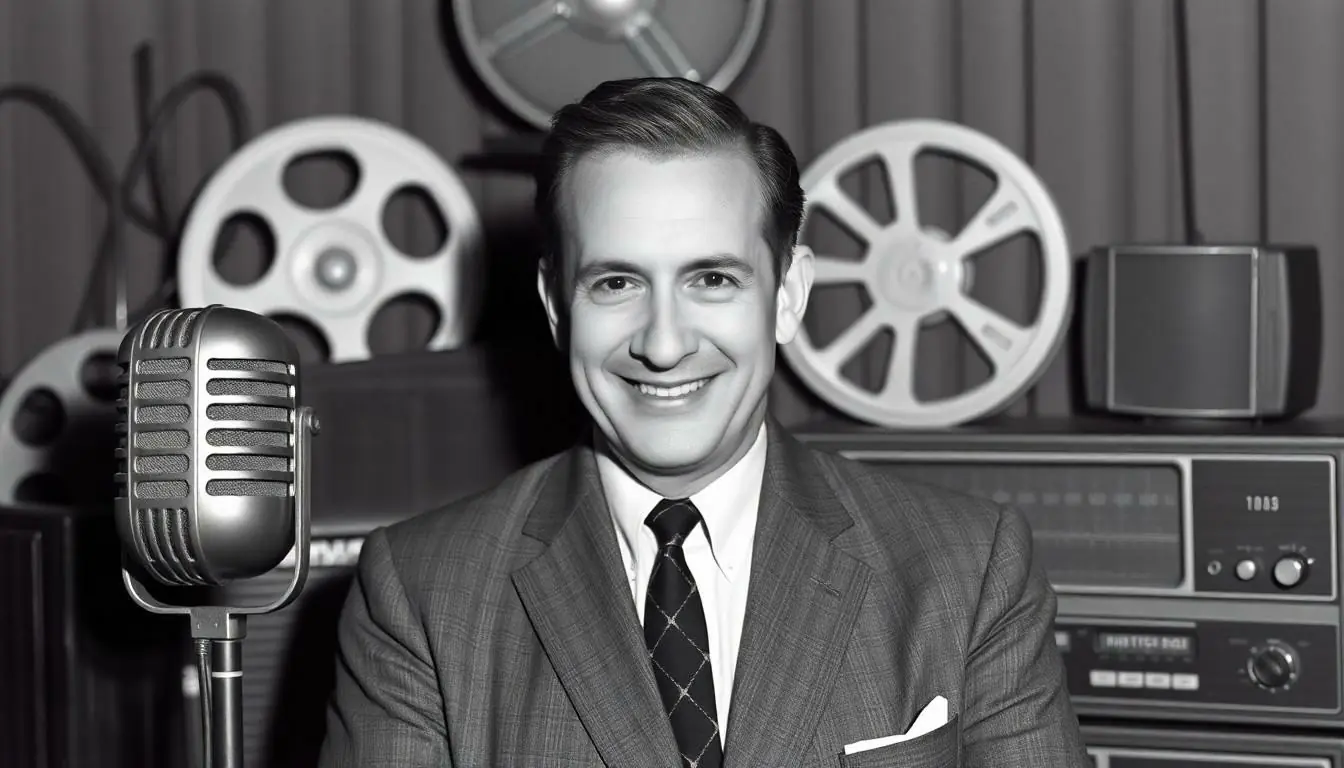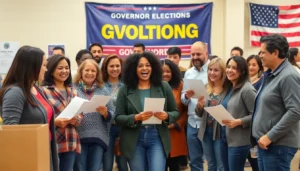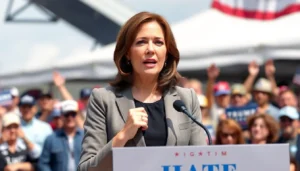Public diplomacy might sound like a fancy term thrown around at cocktail parties, but it’s much more than that. It’s the art of engaging with foreign publics to shape their perceptions and foster mutual understanding. Think of it as international relationship-building, where nations swap their best recipes and ideas instead of just trade deals and treaties.
Table of Contents
ToggleUnderstanding Public Diplomacy
Public diplomacy encompasses a wide range of practices aimed at engaging with foreign audiences to shape perceptions and enhance mutual understanding. It involves forming connections and exchanges that go beyond formal agreements, promoting stable international relationships.
Definition of Public Diplomacy
Public diplomacy refers to efforts undertaken by governments to communicate with global citizens directly, instead of relying solely on state-to-state interactions. This approach includes cultural exchanges, international broadcasting, and social media initiatives aimed at fostering dialogue. These endeavors help inform and influence foreign opinions by sharing a country’s values, policies, and cultural heritage.
Importance of Public Diplomacy in International Relations
Public diplomacy plays a vital role in shaping global perceptions, impacting how nations interact. It facilitates cultural understanding and promotes dialogue, bridging gaps between countries. Through public diplomacy, nations can counter misinformation and strengthen diplomatic ties. Engaging citizens abroad cultivates goodwill, encouraging collaboration on shared challenges, such as climate change and security issues. Effective public diplomacy not only enhances a nation’s image but also supports long-term strategic interests in the global arena.
Historical Context

Public diplomacy has its roots in efforts to communicate and connect with foreign populations. It evolved significantly in the 20th century, especially during the Cold War, when nations focused on influencing public opinion to gain strategic advantages.
Evolution of Public Diplomacy
Throughout the 20th century, approaches to public diplomacy transformed. Early methods often relied on propaganda and one-way communication. As globalization increased, nations embraced more interactive and engaging strategies. The rise of technology and social media reshaped communication methods, allowing real-time engagement with international audiences. This shift emphasized the importance of cultural exchanges and grassroots initiatives in building long-lasting relationships.
Key Figures and Moments
Several key figures contributed to the development of public diplomacy. Edward R. Murrow, an American broadcaster, played a pivotal role by promoting U.S. values through international media during the Cold War. Similarly, the establishment of the U.S. Information Agency in 1953 marked a significant moment, as it focused on disseminating information abroad. Initiatives like the Fulbright Program and cultural diplomacy efforts further showcased vital shifts in the practice, highlighting collaboration with educational leaders and artists to enhance mutual understanding between nations.
Tools and Methods of Public Diplomacy
Public diplomacy employs various tools and methods to engage with global audiences. These strategies focus on enhancing understanding and improving international relationships.
Social Media and Digital Engagement
Social media platforms serve as essential tools for public diplomacy. Governments use them to communicate directly with foreign citizens, sharing messages and fostering dialogue. Platforms like Twitter, Facebook, and Instagram allow for impactful engagement, reaching millions within seconds. They enable nations to address misinformation promptly while showcasing cultural values and policies. Campaigns tailored for specific audiences can effectively shape perceptions, highlight achievements, and promote transparency, further enhancing a country’s image abroad.
Cultural Exchange Programs
Cultural exchange programs play a significant role in public diplomacy, facilitating mutual understanding between nations. These initiatives invite individuals from diverse backgrounds to experience different cultures directly, often through educational opportunities and professional exchanges. Programs like the Fulbright Program allow scholars to share knowledge and insights, enriching global dialogue. Engaging in such exchanges helps cultivate goodwill, fostering long-lasting connections between people. Active participation in cultural events can also showcase national identity, build partnerships, and create a positive narrative about a country on the world stage.
Challenges in Public Diplomacy
Public diplomacy faces several challenges that impact its effectiveness and reach. Understanding these hurdles is essential for developing successful strategies in the field.
Misinformation and Propaganda
Misinformation undermines public diplomacy efforts. Governments often struggle against false narratives that distort their values and policies. Navigating social media’s rapid dissemination of misleading information poses a significant challenge. Misinformation campaigns can damage credibility and erode trust among foreign populations. This environment complicates communication, making it difficult to project a coherent message. Engaging in transparent dialogue and combating misinformation establish a more favorable perception. Proactive measures include fact-checking and promoting accurate narratives that resonate with foreign audiences.
National Security Concerns
National security concerns significantly impact public diplomacy strategies. Governments prioritize the protection of sensitive information while attempting to engage the public. As a result, balancing openness with security becomes crucial. Diplomats often face scrutiny over foreign engagement due to fears of espionage or manipulation. Countering hostile narratives from adversaries complicates efforts to create positive relationships. Uncertainty may hinder collaboration on diplomatic initiatives, as nations weigh potential risks. Awareness of these challenges shapes approaches to public diplomacy, ensuring security remains a key consideration while fostering global dialogue.
The Future of Public Diplomacy
Public diplomacy evolves rapidly, reflecting shifting global dynamics. Emerging trends and technologies shape how nations engage with foreign audiences.
Emerging Trends and Technologies
Digital platforms transform public diplomacy practices. Governments increasingly adopt social media and digital tools to communicate directly with global citizens. Targeted content enhances the effectiveness of communication efforts, allowing for real-time interaction. Virtual events replace in-person gatherings, expanding reach and accessibility. Immersive technologies, such as augmented reality, create engaging cultural experiences. Data analytics enable nations to gauge audience sentiment and refine strategies. Advanced technology may drive innovative initiatives, offering fresh avenues for enhancing mutual understanding.
The Role of Non-State Actors
Non-state actors play a crucial role in public diplomacy. NGOs, multinational corporations, and cultural organizations contribute significantly to diplomatic efforts. Collaboration with these entities amplifies a nation’s message and fosters dialogue. Cultural diplomacy flourishes through partnerships with artists and educators, facilitating exchanges that promote shared values. Additionally, think tanks provide valuable research and policy analysis that inform public diplomacy initiatives. Grassroots movements can influence foreign perceptions, demonstrating the power of collective action. Together, non-state actors enhance the landscape of public diplomacy, enriching global conversations and building stronger ties between nations.
Public diplomacy stands as a vital tool in shaping international perceptions and fostering cooperation among nations. Its evolution reflects the changing dynamics of global communication and the increasing importance of cultural exchange. By engaging directly with foreign audiences, governments can build trust and address challenges effectively.
As technology continues to advance, the methods of public diplomacy will likely become more innovative and interactive. The role of non-state actors will also grow, creating a richer tapestry of dialogue and collaboration. Ultimately, public diplomacy is not just about influencing opinions; it’s about building lasting relationships that contribute to a more connected and understanding world.





